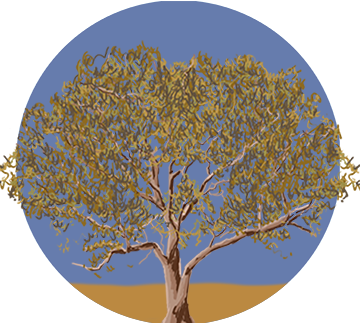GROUNDUP AS ENGAGING MULTIPLICITY
GroundUp M&E of the work of nonAboriginal agencies in Aboriginal contexts prefers to understand these contexts as multiple, rather than as complex as we experience distinct worlds operating simultaneously. Monitoring and evaluation in the world of government is quite different from M&E in Aboriginal traditions. We need to understand both, as well as the contributions of academic traditions as we work together designing and undertaking monitoring and evaluation, while still acknowledging and maintaining their fundamental and incommensurable differences.
ARRIVING AT (rather than assuming) CONCEPTS
The M&E worker in this complex intercultural space is looking to discover collaboratively, relevant concepts (rather than to introduce them, already formed, into the context from elsewhere). Concepts like monitoring and evaluation themselves are constructed and practiced quite differently by different participants, with different justification. Even the labels we bring with us like ‘community’ or ‘individual’, need constantly to be rethought and reinscribed. Under Aboriginal guidance we have elaborated distinct methods for identifying empirically exactly what connections and sticking points need monitoring and evaluation.
EVIDENCE
Some forms of evidence (statistics for example) make good sense to some participants, and others (children on country for example) are important to others. Monitoring and Evaluation involves paying attention to what counts as evidence, how it is generated though attending, discerning, collaborating, narrativising, how it is disseminated and received, and its effects.
THEORIES OF CHANGE, TIME AND TELEOLOGY
M&E implies working in settings over time, looking at the way things change. Some theorists and researchers find it useful to think about M&E as depending upon an often implicit ‘theory of change’. GroundUp M&E pays attention to the assumptions underlying the theories of change in the various worlds of engagement – whether they look for a sort of ‘progress’ or assume an underlying ‘deficit’ in the context of M&E, or maybe look towards a future which ‘returns’ to a faithfulness to ancestral imperatives. Because multiple theories of change may be at work, it is important to explicate them carefully.
GENERALISABILITY AND SCALE
Working with a Ground Up approach means that we are unlikely to mobilise large data sets which generalise findings across space (e.g. a national survey) or time (e.g. longitudinal studies), and so do not seek to offer recommendations at these scales. The evidence we mobilise tends to take the form of stories which are gathered within the research process and collaboratively interpreted so that when taken seriously, insights arising in these interpretations can reconfigure and potentially radically improve intercultural engagements and organisational capacities, first at the local level, but also within the community or the institution.
JUDGING OBSERVER
Standard approaches to research tend to assume that the researcher is a judging observer, standing outside the field of action, authorised to make claims and assessments about the activity of others. However, Ground Up understands researchers, and other involved participants, as all caught up in the collective action within which both perceived problems – and possible solutions – come to emerge. We see such work as generative, with outcomes taking the form of changed practices and improved collective understandings.
INDIVIDUAL GROUPS, COMMUNITIES
University researchers and government and nongovernment agencies often begin their monitoring and evaluation (and their research or policy development), taking the community, or the individual as the obvious or appropriate first unit of analysis. GroundUp M&E has tended to find Aboriginal elders focussing upon groups (generally extended families, or configurations of land/totem shareholders rather than what governments see as ‘communities’), which are constituted in particular ways relating to land and ancestral history. For example in the COVID19 research, elders made clear that the multigenerational family group (rather than the individual) should be the focus of safety measures. In the volunteering research for the Australian Red Cross, the elders made clear that the community is an effect of family groups working beyond ancestral responsibilities. Neither the community nor the individual pre-exists the care and concern exercised through kinship responsibilities. (We find this understanding echoed in John Dewey’s The Public and Its Problems.) [need bibliographic reference]
